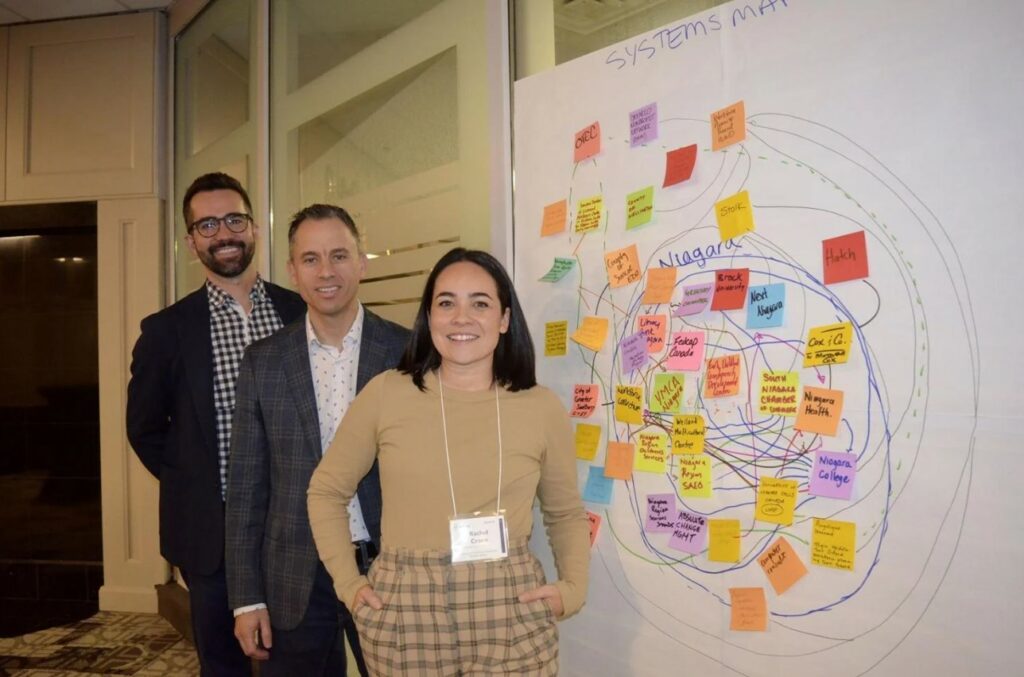Source: The Standard
The map was a lot to take in at first, with lines criss-crossing all over the place.
But ultimately what it shows is just how connected Niagara’s businesses and those in the employment services sector are. A new coalition is hoping to take advantage of those existing connections, fill gaps and help Niagara’s labour market succeed.
“We’ll look at the system map and see where there are gaps, or where there are connections we weren’t aware of,” said Rachel Crane, learning and engagement lead at Workforce Collective, the organization leading the charge to create the coalition.
Crane was explaining the map, put up at White Oaks Conference Resort and Spa, where the Growing Your Workforce conference was held on Thursday (Nov. 9). On it, local businesses and agencies were asked to add themselves to the map and draw lines to any other business or organization on the map to which they already have a relationship.
The result paints a picture that shows where those aforementioned gaps and surprise connections may exist.
While not alone, Niagara is facing several issues when it comes to the labour market. Presenters at the launch outlined some of them. Crane led off by describing some statistics that may come as a surprise to many. According to their Stats Canada numbers, 43 per cent of working-age people in Niagara aren’t working. That number includes both the unemployed and people who aren’t looking for work for any number of reasons.
There’s also a huge influx of newcomers arriving to Canada and Niagara, which provides opportunity, but also presents challenges.
“Newcomers don’t have the same employment equity as someone born in Canada,” she said.
Finally, there are 21,000 adults aged 20 to 64 in Niagara who don’t have a high school diploma.
Crane said the coalition could potentially help people re-engage with the labour market, get people connected to resources that can improve their education or work with employers to better utilize the skill sets of those coming to the country.
The need to address the situation from both the employers and employees perspective is paramount, coalition proponents said. During a question-and-answer period, attendees brought up issues that can be found with some businesses who have longtime owners that haven’t adjusted with the times when it comes to hiring and employee relations.
“They want to (change), they just don’t know how,” said Absolute Change Management’s Dave Peters, adding that he’d like to see a “focus on the development of employers to level up.”
To that end, Crane said, they have worked on developing a program to address just that. It’s something they’ve tentatively called the “good employers academy.”
It’s something the region’s industrial sector is slowly working on, Niagara Industrial Association chair Jordan Sherlock said. Also a vice-president of strategic initiatives at Stolk Construction, Sherlock said his company has brought in leadership training, become a living wage employer and supports projects like the Skilled Trades Have No Gender event.
Marco Marino, associate director of economic development, said the workforce is in the midst of an unprecedented shift, furthering the need for a coalition. His job is to attract business to the region, and he said there’s one thing they can provide that trumps all other business attraction efforts.
“People are the greatest incentive we could possibly give them,” he said.
To start, Marino said, the coalition is looking to narrow down two or three issues they can tackle collectively, and are open to suggestions. To learn more, visit workforcecollective.ca.

